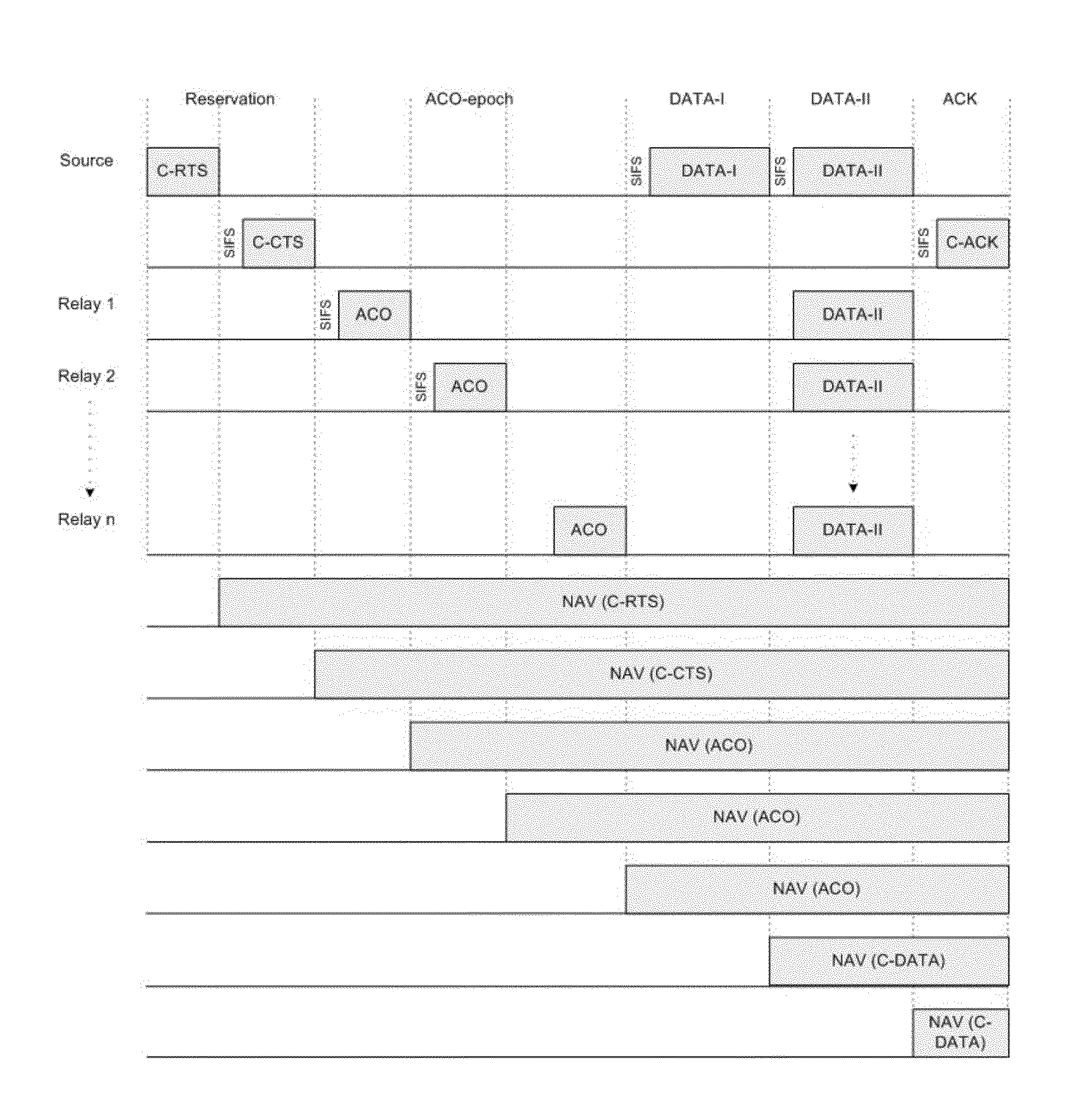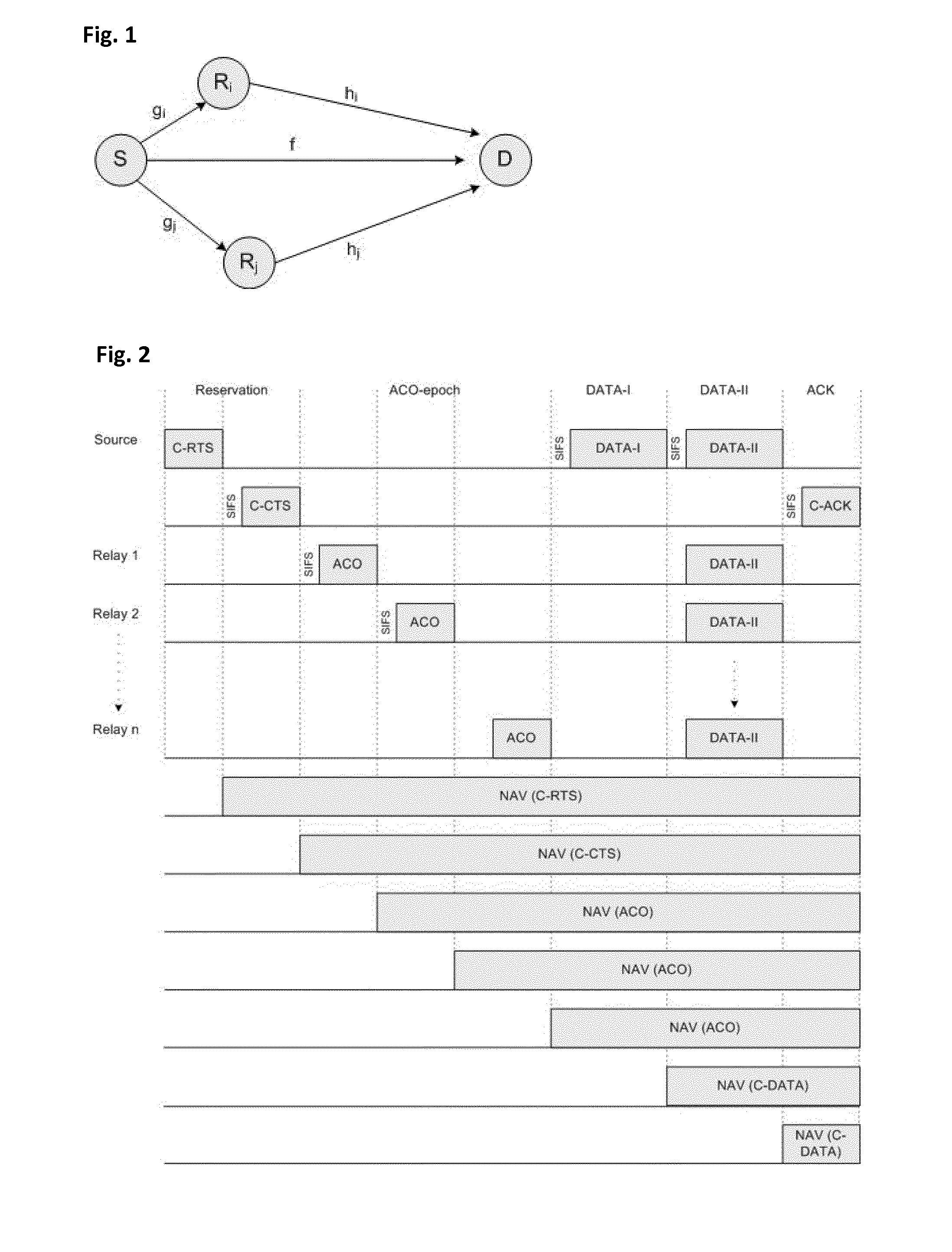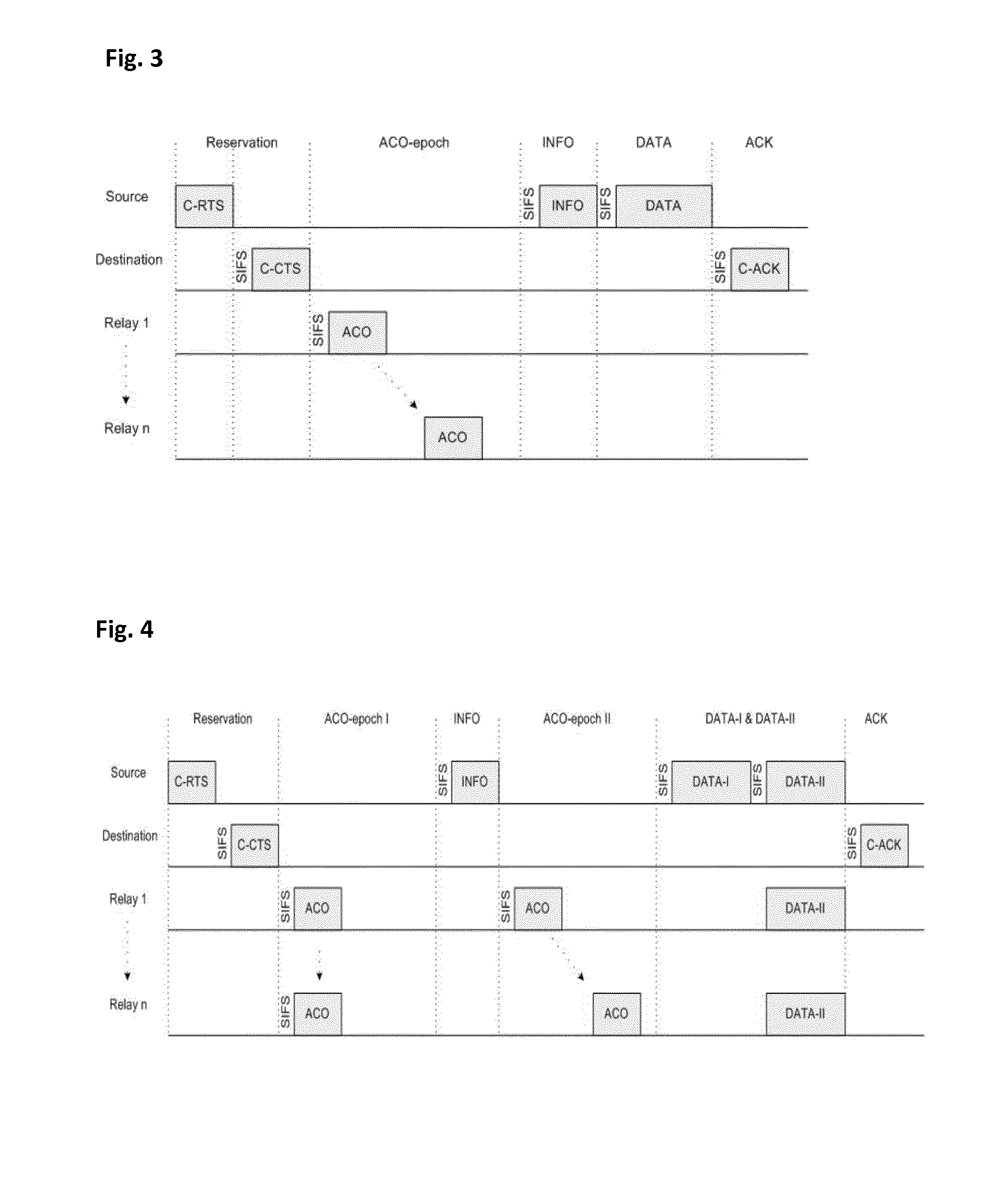Cooperative mac protocol with relay selection and power control
a relay selection and power control technology, applied in transmission systems, site diversity, high-level techniques, etc., can solve the problems of reducing the reliability of communication, the nature of the wireless medium itself, and the collision of relay messages, so as to reduce the possibility of collisions, reduce the impact of interference, and reduce the effect of interferen
- Summary
- Abstract
- Description
- Claims
- Application Information
AI Technical Summary
Benefits of technology
Problems solved by technology
Method used
Image
Examples
Embodiment Construction
[0025]The present invention proposes a wireless system model with a source node, a destination node and N relay nodes, as depicted in FIG. 1. The aim is to find the group of relays that minimizes the total energy consumption to send one successful bit to destination, under given reliability condition, which is expressed in terms of average BER level.
[0026]The COMAC protocol operation according to the present invention is performed such that when the source node has a packet destined to the destination node, a Cooperative Request To Send (C-RTS) packet is initially sent. Having received this packet correctly, the destination node replies back with a Cooperative Clear To Send (C-CTS) packet. A neighboring node that receives both C-RTS and C-CTS is a candidate relay for cooperative transmission. All candidate relays make a decision to participate in cooperation or not, and if a relay node decides to cooperate, it announces this decision with an Available to COoperate (ACO) packet. COMA...
PUM
 Login to View More
Login to View More Abstract
Description
Claims
Application Information
 Login to View More
Login to View More - R&D
- Intellectual Property
- Life Sciences
- Materials
- Tech Scout
- Unparalleled Data Quality
- Higher Quality Content
- 60% Fewer Hallucinations
Browse by: Latest US Patents, China's latest patents, Technical Efficacy Thesaurus, Application Domain, Technology Topic, Popular Technical Reports.
© 2025 PatSnap. All rights reserved.Legal|Privacy policy|Modern Slavery Act Transparency Statement|Sitemap|About US| Contact US: help@patsnap.com



